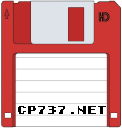Nothing too exciting, but it is something i need, from time to time, to test various terminal emulators and specially the size and the number of colors can be used. It's written in BASH, but i think it will work with other cli interpreters. Just copy/paste the script, make it executable and run it.
With it you can test/check the following things:
- Number of colors, the terminal supports
- The terminal emulator program is being used
- Encoding used
- Size of the terminal, with multiple ways (tput, stty, graphical/text mode)
- ANSI colors and modes (bold, underline, blinking text)
- Cursor size and blinking
- Cursor invisibility
I hope you, will also find it useful. If you have something else to suggest, to include, just write a comment below...
#!/bin/bash
#
# This file echoes a bunch of 24-bit color codes
# to the terminal to demonstrate its functionality.
# The foreground escape sequence is ^[38;2;<r>;<g>;<b>m
# The background escape sequence is ^[48;2;<r>;<g>;<b>m
# <r> <g> <b> range from 0 to 255 inclusive.
# The escape sequence ^[0m returns output to default
function presskey() {
read -p "Press ENTER to continue..."
}
setBackgroundColor()
{
echo -en "\x1b[48;2;$1;$2;$3""m"
}
resetOutput()
{
echo -en "\x1b[0m\n"
}
# Gives a color $1/255 % along HSV
# Who knows what happens when $1 is outside 0-255
# Echoes "$red $green $blue" where
# $red $green and $blue are integers
# ranging between 0 and 255 inclusive
rainbowColor()
{
let h=$1/43
let f=$1-43*$h
let t=$f*255/43
let q=255-t
if [ $h -eq 0 ]
then
echo "255 $t 0"
elif [ $h -eq 1 ]
then
echo "$q 255 0"
elif [ $h -eq 2 ]
then
echo "0 255 $t"
elif [ $h -eq 3 ]
then
echo "0 $q 255"
elif [ $h -eq 4 ]
then
echo "$t 0 255"
elif [ $h -eq 5 ]
then
echo "255 0 $q"
else
# execution should never reach here
echo "0 0 0"
fi
}
function terminal-app() {
# Source - https://stackoverflow.com/a
# Posted by user14033418, modified by community. See post 'Timeline' for change history
# Retrieved 2025-11-15, License - CC BY-SA 4.0
ps -o comm= -p "$(($(ps -o ppid= -p "$(($(ps -o sid= -p "$$")))")))"
}
function terminal-ansi() {
echo -e "Bold Red: \033[1;31mBold red?\033[0m"
echo -e "Underlined Blue: \033[4;34mUnderlined Blue?\033[0m"
echo -e "Blinking Yellow (if supported): \033[5;33mBlinking Yellow?\033[0m"
echo -e "Reversed text: \033[7mReversed?\033[0m"
IFS=';' read -sdR -p $'\E[6n' ROW COL;echo -n "Cursor Position: ${ROW#*[} x ${COL#*[} ..."
presskey
echo -en "\033[?25lThe cursor should be invisible..."
presskey
echo -en "\033[?25hThe cursor should be now visible..."
presskey
echo -en "Cursor shape to blinking block: \033[0 q"
presskey
echo -en "Cursor shape to steady block: \033[2 q"
presskey
echo -en "Cursor shape to blinking underline: \033[3 q"
presskey
echo -en "Cursor shape to steady underline: \033[4 q"
presskey
echo -en "Cursor shape to blinking bar: \033[5 q"
presskey
echo -en "Cursor shape to steady bar: \033[6 q"
presskey
echo -en "Did you hear a bell? \007\007 $(tput bel)"
presskey
echo -e "\033[0 q"
echo "Terminal width in characters:"
echo "0....:....1....:....2....:....3....:....4....:....5....:....6....:....7....:....8"
clear
for i in `seq 0 49`; do
echo $i
echo -en " "
done
echo -n "50 Type the number you see on top> "
read line
echo -e "Your terminal has $((50 - $line + 1)) lines"
}
function terminal-various() {
echo ":: Terminal size is: TPUT: $(tput cols) x $(tput lines) | STTY: $(stty size)"
echo ":: The terminal supports $(tput colors) colors"
echo ':: The $TERM env. is:' $TERM
echo ":: Terminal application is: " $(terminal-app)
echo ":: Encoding is: $(locale charmap)"
echo "--- Locale info ---"
locale
echo -e ":: Do you see the Euro sign? ---> \xe2\x82\xac "
echo -e ":: Do you see a smily emoticon? ---> \u263A"
}
function test24bit() {
echo "If you are seeing gradient color changing, the terminal supports 24bit colors"
for i in `seq 0 127`; do
setBackgroundColor $i 0 0
echo -en " "
done
resetOutput
for i in `seq 255 -1 128`; do
setBackgroundColor $i 0 0
echo -en " "
done
resetOutput
for i in `seq 0 127`; do
setBackgroundColor 0 $i 0
echo -n " "
done
resetOutput
for i in `seq 255 -1 128`; do
setBackgroundColor 0 $i 0
echo -n " "
done
resetOutput
for i in `seq 0 127`; do
setBackgroundColor 0 0 $i
echo -n " "
done
resetOutput
for i in `seq 255 -1 128`; do
setBackgroundColor 0 0 $i
echo -n " "
done
resetOutput
for i in `seq 0 127`; do
setBackgroundColor `rainbowColor $i`
echo -n " "
done
resetOutput
for i in `seq 255 -1 128`; do
setBackgroundColor `rainbowColor $i`
echo -n " "
done
resetOutput
}
clear
echo "--- Various terminal capabilities..."
terminal-various
presskey
clear
echo "--- ANSI Codes Support..."
terminal-ansi
presskey
clear
echo "--- Lets test color support..."
test24bit




